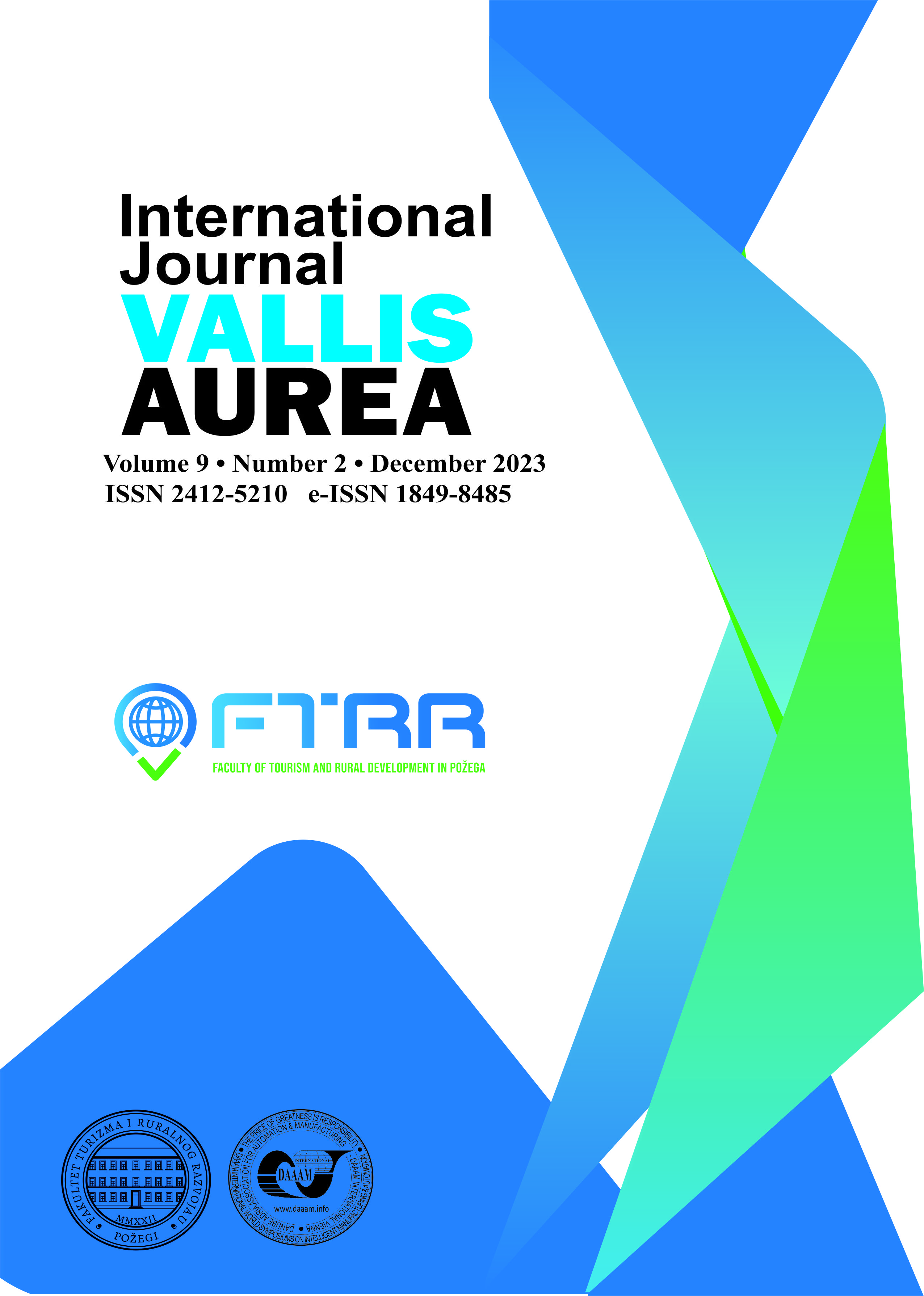Bank Term Deposit Service Patronage Forecasting using Machine Learning
DOI:
https://doi.org/10.2507/IJVA.9.2.5.106Keywords:
marketing, bank, term-deposit, patronage, Random Forest, Xtreme Gradient BoostingAbstract
Term deposit is one of the financial services offered by the bank. Effective bank marketing campaign to forecast possible customer to engage in personal term deposit marketing interaction is vital because it’s hard to stand out, considering that all banks offer similar products. Trailing to this, this study proposed the use of machine learning algorithms to develop a bank term deposit patronage forecasting models which have the ability to study the characteristics of customers to identify potential term deposit customers. Random Forest and Xtreme Gradient Boosting algorithms along with Portuguese institution marketing campaign dataset were used to develop bank term deposit service patronage forecasting model. The data balancing algorithm utilized is the Synthetic Minority Over-sampling Technique and Edited Nearest Neighbors (SMOTE-ENN) and feature selection was conducted using Information Gain. The Random Forest model achieved an accuracy of 95%, recall of 92% and f1 scores of 94%. Xtreme Gradient Boosting model achieved an accuracy of 97%, recall of 97% and f1 scores of 97%. The results of the experiment revealed the Xtreme Gradient Boosting emerged as the best model
References
1. Czinkota, M. R.; Ronkainen (2004) International Marketing. 7th Ed. Ohio: Harcourt. Inc.
2. Dawes, J.; Brown R. B. (2000) Postmodern Marketing: Research Issues for Retail Financial Services. Qualitative Market Research. An International Journal, Vol 3, No 2, , pp. 90-98.
3. Flohr-Nielsen, J. (2002) Internet Technology and Customer Linking in Nordic Banking, International Journal of Service Industry Management, Vol 13, No 5, pp. 475-495.
4. Ghorbani, R.; Ghousi, R. (2020) Comparing different resampling methods in predicting students’ performance using machine learning techniques”, IEEE Access, 8, 2020, pp. 67899-67911.
5. Gregova, E.; Valaskova, K.; Adamko, P.; Tumpach, M.; Jaros, J. (2020) Predicting Financial Distress of Slovak Enterprises: Comparison of Selected Traditional and Learning Algorithms Methods. Sustainability, 12, pp. 3954-3959.
6. Hossam M. (2020) Predicting Loan Approval of Bank Direct Marketing Data Using Ensemble Machine Learning Algorithm. International Journal of Circuits, Systems and Signal Processing, Vol. 14, pp. 914-922.
7. Islam, M. D.et al. (2022) Airbnb rental price modelling based on Latent Dirichlet Allocation and MESF-XGBoost composite model. Machine Learning with Applications, Vol. 7, pp. 1002-1008.
8. James O.; Olajide B. O.; Omanga M. J. (2023) Over-the-top Application Traffic Analysis Model for Networks using Multilayer Perceptron (MLP) and Long Short-term Memory (LSTM). Asian Journal of Pure and Applied Mathematics. Vol. 5, Issue 1, pp. 242-250.
9. Jan, C. L. (2021) Financial Information Asymmetry: Using Deep Learning Algorithms to Predict Financial Distress. Symmetry, Vol. 13, pp. 443-453., https://doi.org/10.3390/sym13030443
10. Kurapati, N.; Kumari, P.; Bhansali. (2018) Evaluating the performance of machine learning algorithms in financial market forecasting: A comprehensive survey in http://arxiv.org.
11. Laksana V. (2022) Analysis of Predicting the Success of the Banking Telemarketing Campaigns by Using Machine Learning Techniques. A Published MSc. Research Project Submitted to School of Computing, National College of Ireland. pp. 1-75.
12. Marc T.; Amir T (2022) A banking Platform to Leverage Data-Driven Marketing with Machine Learning, Entropy, Vol. 24, pp. 1-22. https://doi.org/10.3390/e24030347
13. Maohammad Z. A.et al.. (2023) Modelling Bank Customer Behaviour Using Feature Engineering and Classification Techniques. Research in International Business and Finance, Vol. 65, pp. 153-164.
14. Moro, S.; Cortez, P.; Rita, P. (2014) A Data-Driven Approach to Predict the Success of Bank Telemarketing. Decision Support Systems, Elsevier, 62, pp. 22-31.
15. Muhammed J. A.; Akter S.; Bin, A.M.; Rezaul K. M. (2021) Bank Deposit Prediction using Ensemble Learning, Artificial Intelligence Evolution. Vol. 2, issue 2, pp 42-51. DOI: https://doi.org/10.37256/aie.222021880
16. Muntasir N. M.et al. (2022) A comprehensive investigation of the performances of different machine learning classifiers with SMOTE-ENN oversampling technique and hyperparameter optimization for imbalanced heart failure dataset. Scientific Programming, pp. 1-17.
17. Nguyen M. T. (2022) Machine Learning Performance on Predicting Banking Term Deposit. In : Proceedings of the 24th International Conference on Enterprise Information Systems (ICEIS 2022) – Vol.1, pp. 267-272.
18. Olajide B. O.; Wreford A. I. (2023) A Predictive Model for Car-Loan Repayment Credibility of Customers. Asian Basic and Applied Research Journal, Vol. 5, No. 1, pp.81-89.
19. Omanga M. J.; Olajide, B. O.; Okpor J.; Andrew I. W. (2023) Smart User Consumption Analysis Using Support Vector Machine and Multilayer Perceptron. Asian Research Journal of Current Science, Vol. 5, Issue 1, pp.163-170.
20. Shehadeh, A.; Alshboul, O.; Al Mamlook, R. E.; Hamedat, O. (2021) Machine learning models for predicting the residual value of heavy construction equipment: An evaluation of modified decision tree, LightGBM, and XGBoost regression. Automation in Construction, Vol. 129, pp. 1038- 1048.
21. Subramanian M.; Shankar N. B.; Vijaya P. (2023) Deploy Machine Learning Model for Effective Bank Telemarketing Campaign. International Conference on Distributed Computing and Electrical Circuits and Electronics, pp. 158- 162.

Downloads
Published
Issue
Section
License
Copyright (c) 2023 Vallis Aurea

This work is licensed under a Creative Commons Attribution-NonCommercial-NoDerivatives 4.0 International License.
Authors of papers for publishing in the journal agree under a Creative Commons Attribution-NonCommercial-NoDerivatives 4.0 International License.https://creativecommons.org/licenses/by-nc-nd/4.0/






